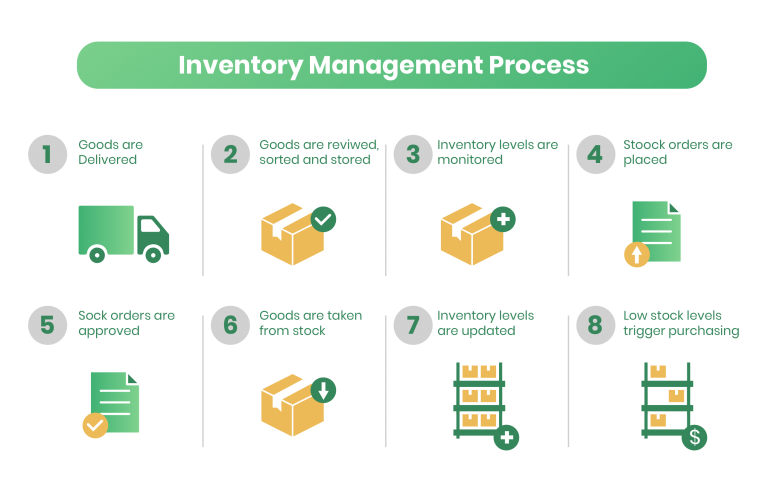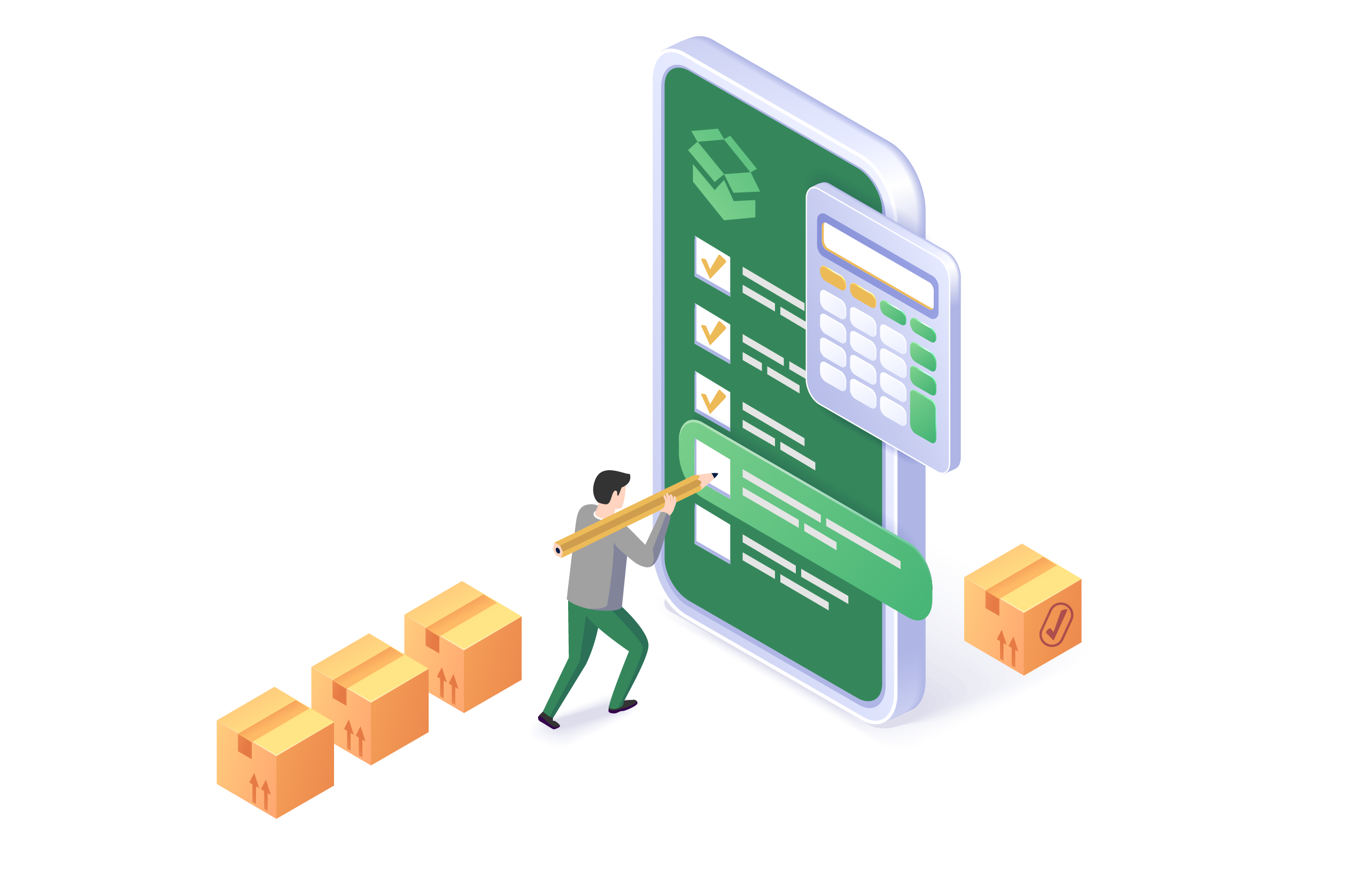Inventory Management Process and Implementation Method
Table of Contents
Definition of Inventory Management
Inventory management is the arrangement of goods related to logistics activities. These goods have various purposes, depending on the type and scale of a company’s business. Some are stored for the production process, in other cases some are immediately resold. Whatever the purpose, it can’t be separated from inventory management. Check out some stages and methods of inventory management in the explanation below!
Read More: Types of Inventory System & Their Benefits for Your Business
Inventory Management Process

In a warehouse, inventory management involves tracking, comprehensive stock control, and shipping.
The details of inventory management stages are:
Delivery of Goods to the Warehouse
Goods received can be in the form of raw materials for production, finished goods for distribution, and indirect raw materials that play a role in the industrial production process.
Goods Receipt
Goods delivered in the previous stage will be checked, grouped, and stored in specific areas, according to the policies of each company’s warehouse. In this stage, SKU and QR Code/RFID will be placed in each product to generate an easy tracking process. Warehouse Management System Advotics facilitates easy goods tracking with QR Code/RFID technology. Find out more!
Inventory Level Monitoring
It’s a must to monitor inventory levels by carrying out periodic calculations supported by automated technology to make the process easier. Having accurate inventory data can minimize the possibility of running out of stock. Start switching to automated technology now!
Entry of Orders from Buyers
At this stage, the buyer shows interest in the stock owned by the company and usually continues with a purchase transaction, where the buyer submits a purchase order and the seller issues a sales order.
Order Approval
At this stage, incoming orders are verified and then proceed with an administrative checking process related to orders.
Order Picking
Orders that have been verified are taken from the stock area and sent to the buyer according to the purpose of purchase (production activities, resale, or sent directly to the customer).
Inventory Data Updating
After the outbound process, an update will proceed in the system regarding the number of goods distributed to all parties involved. If you use Advotics Warehouse Management System, all track records of incoming and outgoing goods will be updated automatically.
Find Out More About Complete Guide of Warehouse Management System
Restocking
Replenishment of warehouse inventory as needed depends on the approach method set by each warehouse.
Inventory Management Strategy
To implement several processes or stages in inventory, companies generally use several strategies in their management. The following are some approaches commonly used in warehouse management.
Economic Order Quantity (EOQ) Method
Inventory management method by buying goods to match the number of orders and specifications, and completion time, with orders received.
Material Requirement Planning (MRP) Method
This method focuses on inventory control and planning to ensure raw materials are always available. This method aims to maintain the availability of raw materials even in small quantities.
ABC method
ABC analysis prioritizes inventory grouping based on the total inventory value. Each item is labeled according to its respective class.
Just In Time (JIT) Method
In this method, the company attempts to have 0 inventory or close to zero. The goal is to minimize inventory costs. The company only tries to buy supplies when needed so that none of them are wasted.
Periodic Review Method
Orders for supplies are conducted at the same time from time to time. As an advantage, the company doesn’t need to carry out lengthy administrative planning because the purchasing process is scheduled regularly.
Those are the explanations about stages and methods used in inventory management. Follow and apply those aspects according to your type of business.




